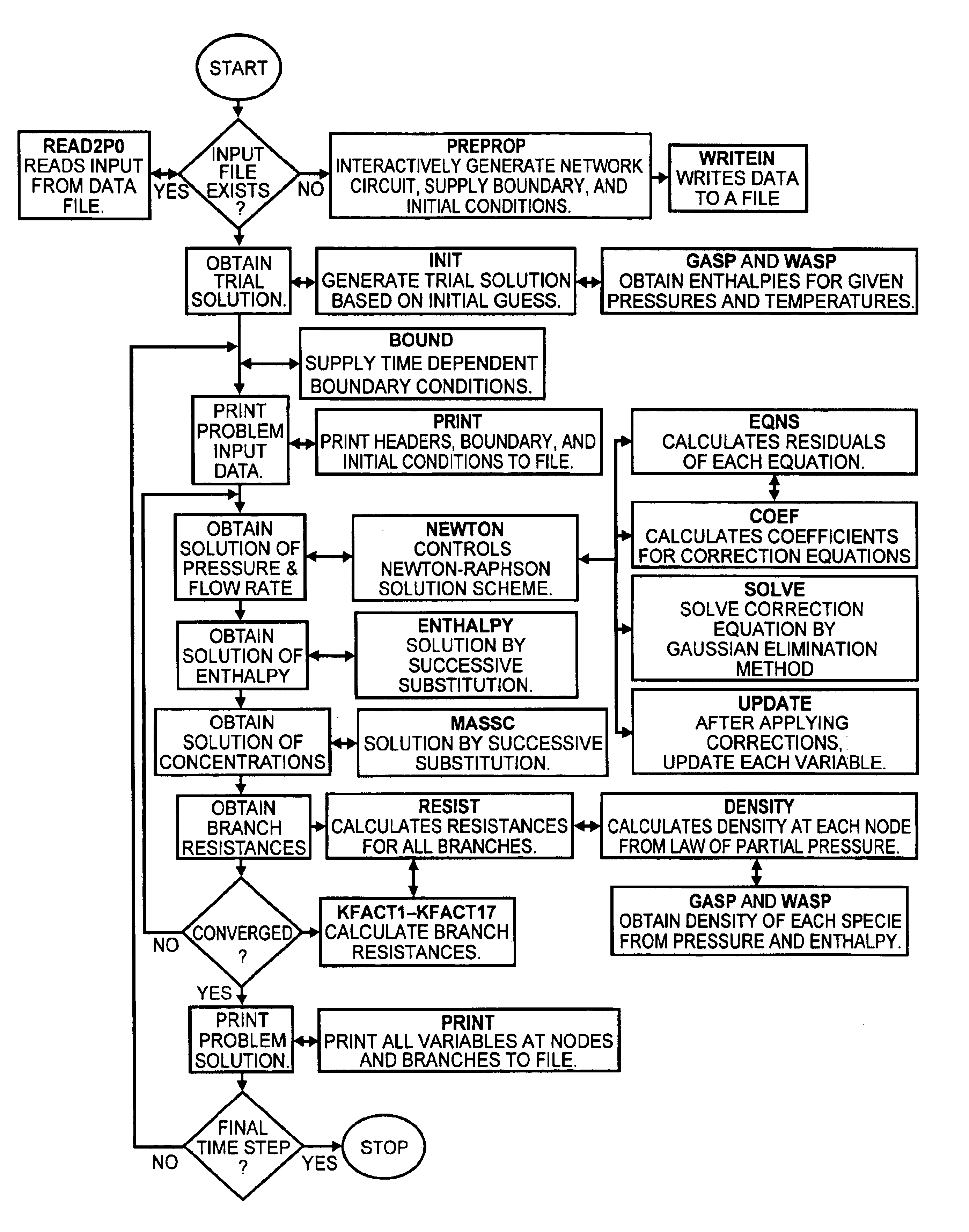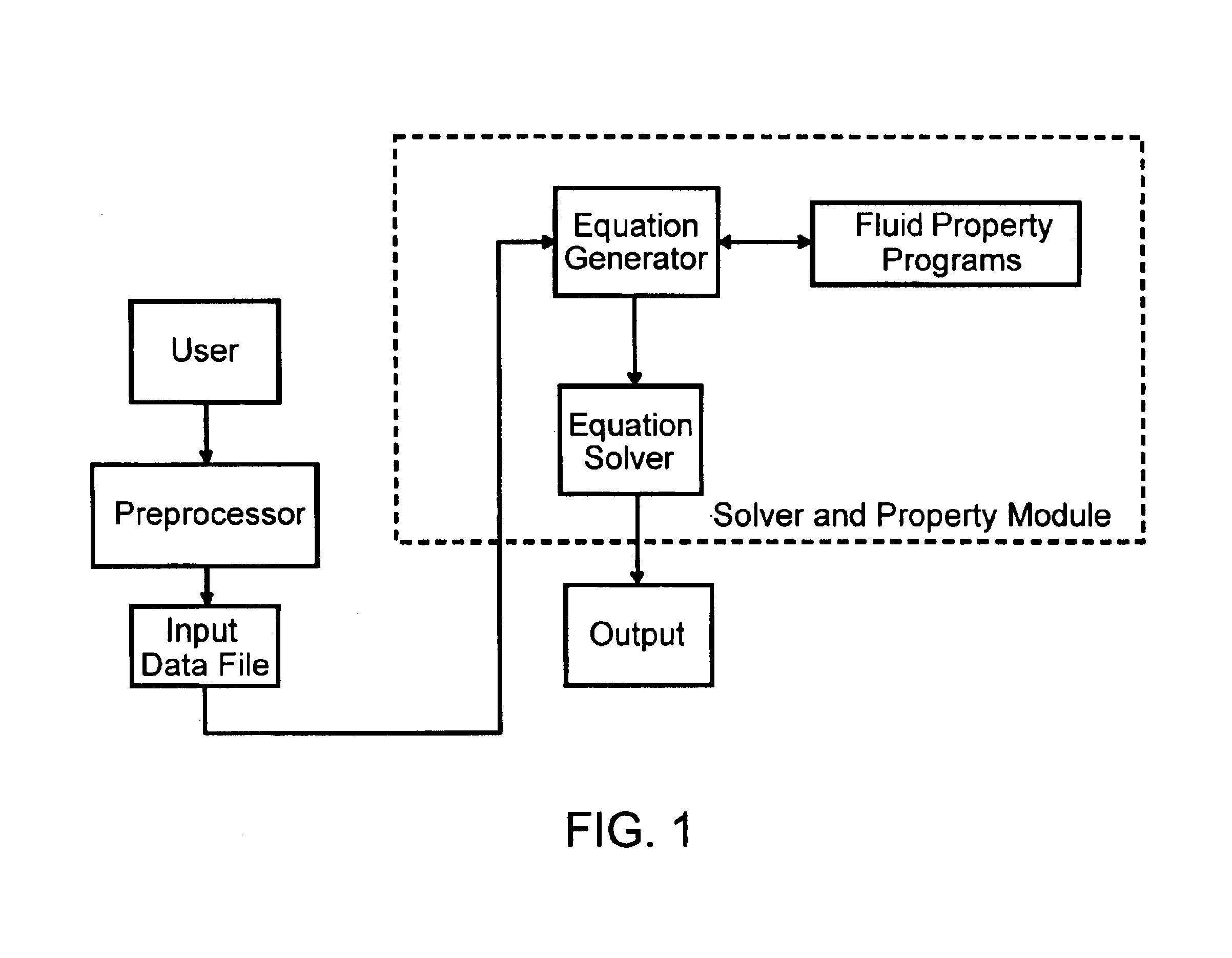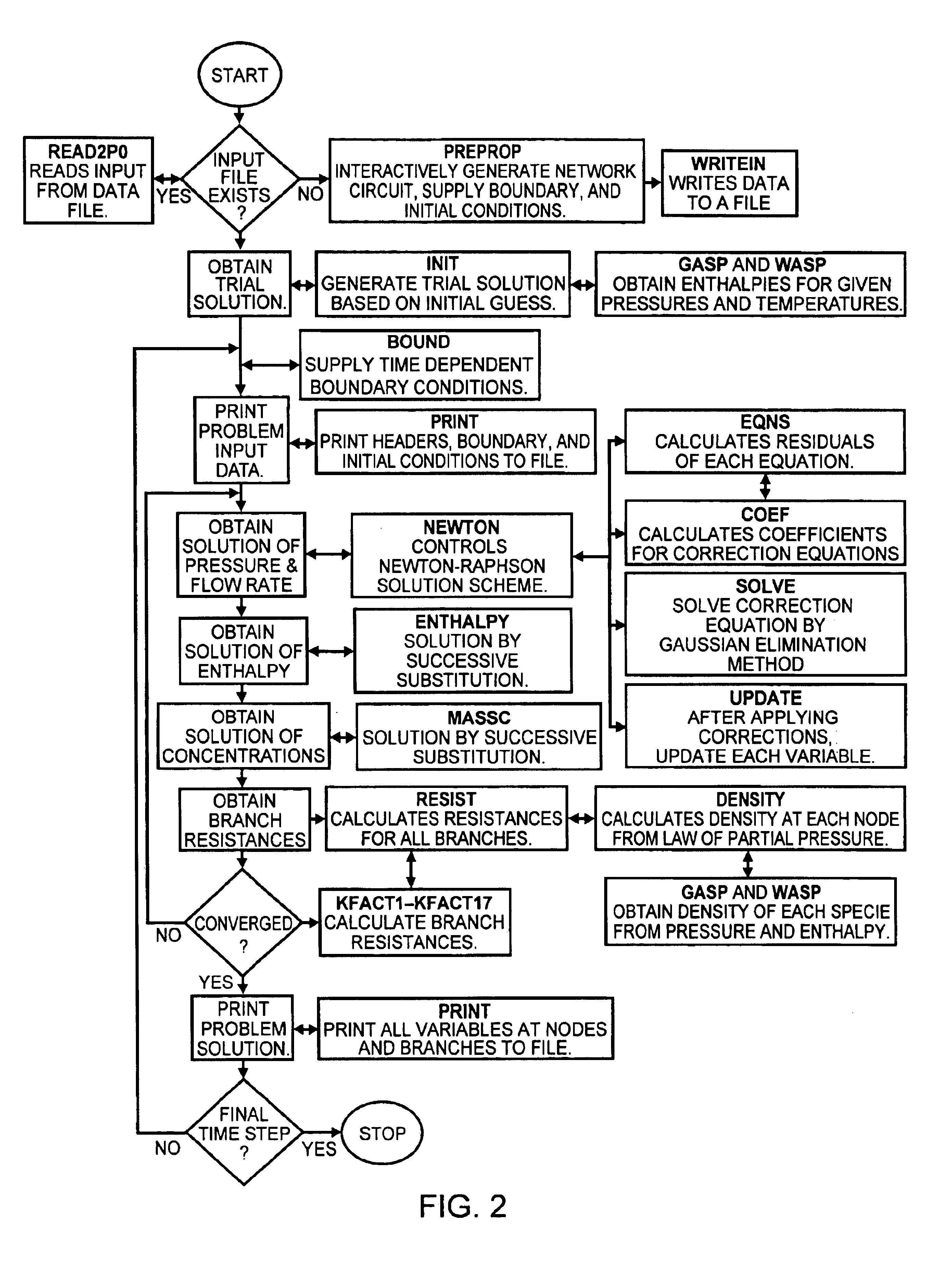Generalized fluid system simulation program
a fluid system and simulation program technology, applied in the field of generalized fluid system simulation program, can solve the problems of difficult to use the original code for a new design without extensive changes in the original code, and it is difficult to extend the capability of the original code, and achieves time-consuming and inefficient efforts
- Summary
- Abstract
- Description
- Claims
- Application Information
AI Technical Summary
Benefits of technology
Problems solved by technology
Method used
Image
Examples
Embodiment Construction
The working example presented here is intended to be illustrative of the present invention and should not be construed to limit its scope. Demonstrated hereby are major features of the present invention as applied to a significant fluid engineering problem. Another purpose of this example is to verify predictions of the present invention by comparing GFSSP solutions with experimental data thereby showing the significant utility of the present invention in the field of fluid engineering.
Axial Thrust Calculation in a Turbopump
Problem Considered:
It is desired to calculate the axial thrust of the SIMPLEX turbopump operating at 25,000 rpm with liquid oxygen as the operating fluid. In order to calculate axial thrust, the pressure distribution throughout the secondary flow system of the turbopump must be obtained. FIG. 9 shows a schematic of the turbopump. The pressure is known at the inducer inlet, the inducer discharge, on the back face of the impeller (upstream of the Labyrinth seal), o...
PUM
 Login to View More
Login to View More Abstract
Description
Claims
Application Information
 Login to View More
Login to View More - R&D
- Intellectual Property
- Life Sciences
- Materials
- Tech Scout
- Unparalleled Data Quality
- Higher Quality Content
- 60% Fewer Hallucinations
Browse by: Latest US Patents, China's latest patents, Technical Efficacy Thesaurus, Application Domain, Technology Topic, Popular Technical Reports.
© 2025 PatSnap. All rights reserved.Legal|Privacy policy|Modern Slavery Act Transparency Statement|Sitemap|About US| Contact US: help@patsnap.com



